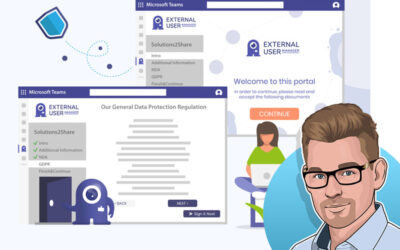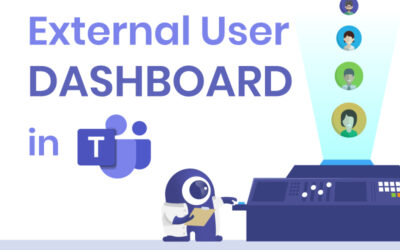Release October 2022: Powerful New Features
Here are the new features of the Teams Manager release in October 2022 for Microsoft Teams. If you would like to see them in more detail, simply book a free demo.
Provisioning of new Content Types, Templates, PnP Provisioning Package and more
- Provision Communication Sites, Modern Sites without Group and Planner
In addition to teams, Yammer communities and SharePoint sites, Teams Manager now supports the provisioning of new content types: Communication Sites, Modern Sites without Group and Planner. For Communication Sites and Modern Sites without group, you will need to grant additional permissions in the expert settings mode under SharePoint Content. - Templates for Communication Sites, Modern Sites without Group and Planner
For all enabled options, you can also create templates. So you can, for example, create a template for a Communication Site that you can then open and edit in SharePoint. - PnP Provisioning Package
While you can use these new provisioning features within Teams Manager, there is also a more extensive option. The provisioning and templating for Communication Sites and Modern Sites without group are also part of our new PnP Provisioning package, an add-on product that can be connected to Teams Manager via Webhook. PnP provisioning lets you make major adjustments to Sharepoint, such as permission groups, and allows you to use the SharePoint provisioning features to their full extent. - SharePoint List Synchronization (Beta)
Another new feature is SharePoint List Synchronization. This Enterprise feature allows you to select a SharePoint list in which the teams overview is synchronized with a Sharepoint site. You get a list of all teams including information such as the title, description, owners, members, metadata and many more. You can edit the data of your teams directly in this list, and even add new teams by selecting a template as a new item for this list. You can activate this feature in the expert settings mode under SharePoint content in the tab “Synchronize with SharePoint list”. - Connect “Person” Metadata Field to SharePoint Permission Groups
In the Enterprise Edition, the “person” metadata field now also supports the authorization of persons in SharePoint permission groups. You can create metadata fields for persons that need to be connected to a SharePoint permission group (default owner, member or visitor groups or your own custom permission group). Any user added in the “create team” process will then be added to the SharePoint group. The SharePoint list synchronization needs to be enabled and additional SharePoint permissions granted for this feature to become available. - Private channels: Provision Files and Folders
It is now possible to provision documents and folders in private channels – private channels now work with files and document libraries. If you add a private channel in a template, you can add files and folders to the private channel and they will be provisioned. Also if you go to the Files tab of a channel and click on “Open in SharePoint”, you can then go to the Site Contents and add new lists and document libraries to the private channel right there. In SharePoint, if you go to Website Information and Website settings, you can also add website columns and website content types. - Force Visibility of Public or Private Teams
The selection of public/private teams can be forced or hidden. In the Teams Manager settings under Policies, when you create a new policy or edit an existing one, you can now select whether you don’t want to force any visibility setting for new teams at all, or force them to be private or public. This will overwrite the option which the user selects in the request process for new teams. (If you have disabled the creation of public teams, you will not find this option in the policies.) - Disable the Creation of Public Teams
Teams Manager’s settings for new team requests allow you to specify if users should be able to create public teams or not. In the Teams Manager settings under Request, you now have an option to enable or disable the creation of public teams completely. If public teams are disabled, this option will be skipped in the request process and all teams will be set to private automatically. - Search Requests by Date
It is now possible to search for team requests by date – this can be a year, or even a specific day.
Book a free demo for more insights!
Book A Demo

